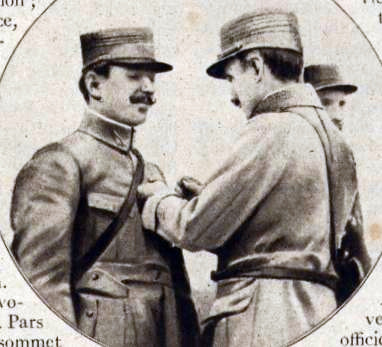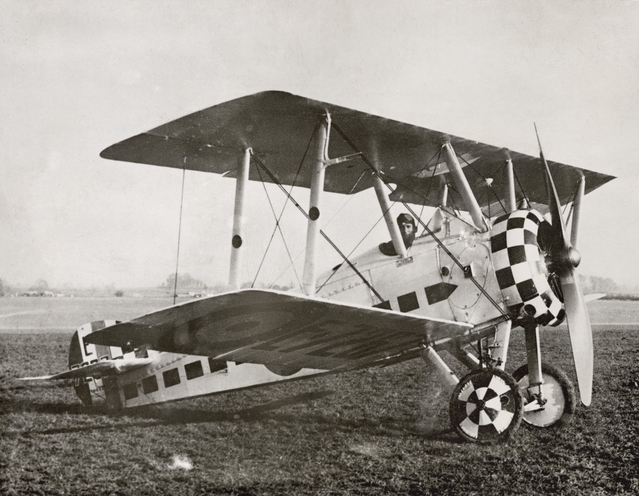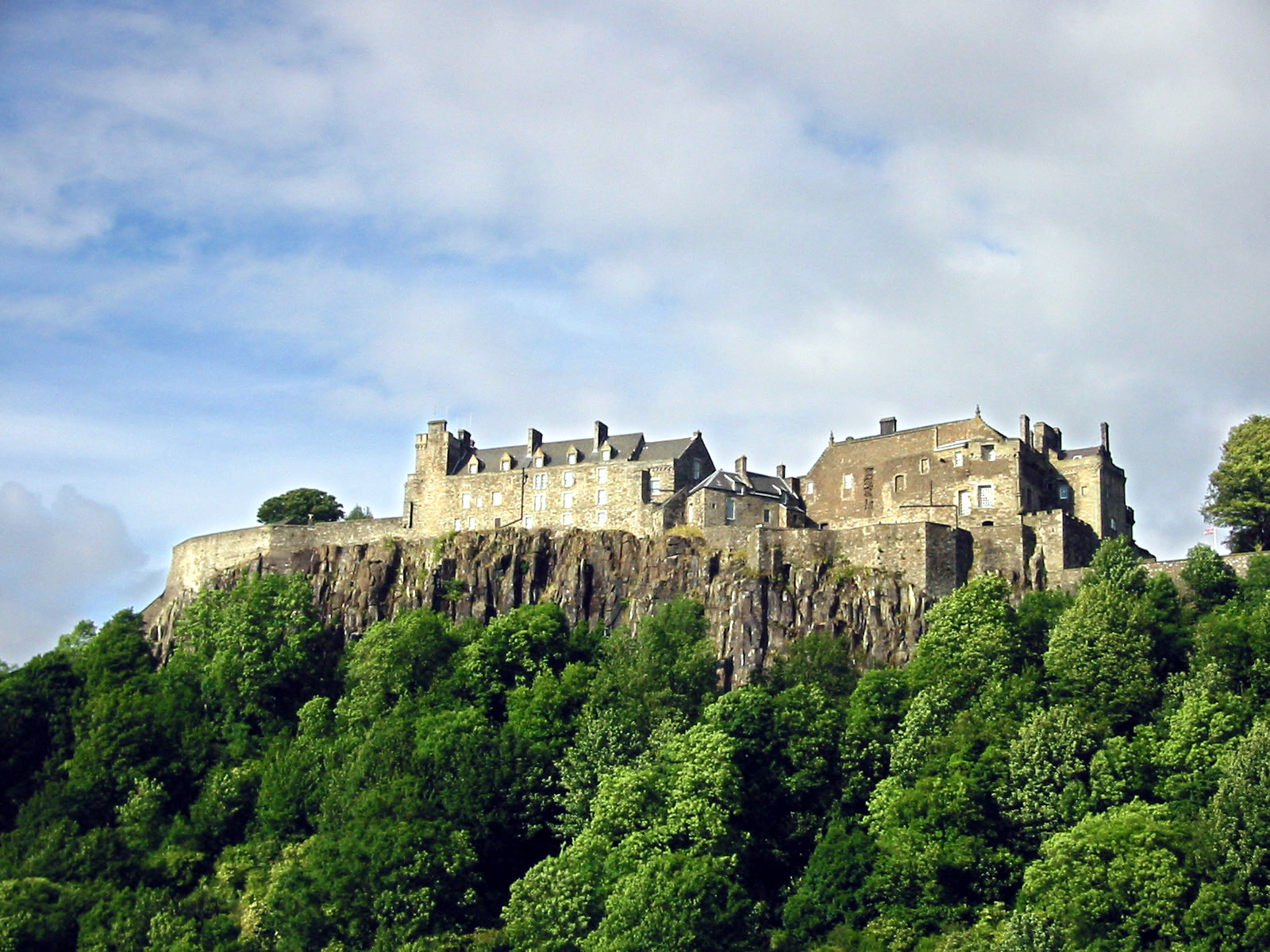|
No. 43 Squadron RAF
Number 43 Squadron, nicknamed ''the Fighting Cocks'', was a Royal Air Force aircraft squadron originally formed in April 1916 as part of the Royal Flying Corps. It saw distinguished service during two world wars, producing numerous Flying ace, "aces". The squadron last operated the Panavia Tornado ADV, Panavia Tornado F3 from RAF Leuchars, Scotland, in the air defence role, until it was disbanded in July 2009. History First World War The squadron was formed at Stirling, Scotland, on 15 April 1916, from No. 18 Squadron RAF, No. 18 Reserve Squadron as a unit of the Royal Flying Corps, and was equipped with various types, which it used for training until December 1916 when Sopwith 1½ Strutters arrived. These were taken to the Western Front (World War I), Western Front the following month, where it operated as an Army squadron carrying out fighter reconnaissance duties. In September 1917, Sopwith Camels arrived, and the squadron undertook ground attack duties; the squadron cont ... [...More Info...] [...Related Items...] OR: [Wikipedia] [Google] [Baidu] |
Heraldic Badges Of The Royal Air Force
Heraldic badges of the Royal Air Force are the insignia of certain commands, squadrons, units, wings, groups, branches and stations within the Royal Air Force. They are also commonly known as crests, especially by serving members of the Royal Air Force, but officially they are Heraldic badge, badges. Each badge must be approved by the reigning monarch of the time, and as such will either have a Tudor Crown (heraldry), King's or St Edward's Crown, Queen's Crown upon the top of the badge, dependent upon which monarch granted approval and the disbandment date of the unit.Most units/squadrons and bases had their badges updated to the Queen's Crown sometime after her accession, (although in some cases many years elapsed before the badge was updated). Most of the flying units were disbanded after the Second World War, so their badges retained the King's Crown. Queen Elizabeth II promulgated an order in October 1954 detailing that all current badges in use, and from that date on, were to ... [...More Info...] [...Related Items...] OR: [Wikipedia] [Google] [Baidu] |
Flying Ace
A flying ace, fighter ace or air ace is a military aviation, military aviator credited with shooting down a certain minimum number of enemy aircraft during aerial combat; the exact number of aerial victories required to officially qualify as an ace varies, but is usually considered to be five or more. The concept of the "Ace (military), ace" emerged in 1915 during World War I, at the same time as aerial dogfighting. It was a propaganda term intended to provide the home front with a cult of the hero in what was otherwise a Attrition warfare, war of attrition. The individual actions of aces were widely reported and the image was disseminated of the ace as a chivalrous knight reminiscent of a bygone era. For a brief early period when air-to-air combat was just being invented, the exceptionally skilled pilot could shape the battle in the skies. For most of the war, however, the image of the ace had little to do with the reality of air warfare, in which fighters fought in formation an ... [...More Info...] [...Related Items...] OR: [Wikipedia] [Google] [Baidu] |
Henry Woollett
Henry Winslow Woollett, (5 August 1895 – 31 October 1969) was a British flying ace and the highest scoring British balloon busting ace credited with 35 aerial victories, including eleven balloons, during the First World War. He continued to serve in the Royal Air Force until the 1930s. Early life and early military career Henry Winslow Woollett was born on 5 August 1895. He grew up in Southwold, Suffolk, and was educated at Wellingborough School (1907–1913). A doctor's son, he was pursuing medical studies when the First World War began. He enlisted and, on 18 November 1914, was commissioned as a second lieutenant in the infantry. He was promoted to lieutenant in the 6th Battalion, Lincolnshire Regiment on 10 December. The following year he served in the Gallipoli Campaign, taking part in the landing at Suvla Bay in August 1915. In 1916, he requested and received a transfer to the Royal Flying Corps. He qualified as a pilot after only three and a half hours flight time, ... [...More Info...] [...Related Items...] OR: [Wikipedia] [Google] [Baidu] |
RAF Spitalgate
Royal Air Force Spitalgate or more simply RAF Spitalgate formerly known as RFC Grantham and RAF Grantham was a Royal Flying Corps and Royal Air Force station, located south east of the centre of Grantham, Lincolnshire, England fronting onto the main A52 road. History The station opened in 1915 as Royal Flying Corps Station Grantham, becoming RAF Grantham on 1 April 1918 - a name it bore until 1942 when it was renamed as RAF Spitalgate. Throughout the First World War the station focused on flying training, hosting a succession of reserve (Nos 49, 86 (Canadian), 11, and 50) and then training squadrons (the renamed No. 49 (Training) Squadron and 15, 20, and 37, plus No. 39 in 1919) plus several United States Army Air Service squadrons (9th, 50th, 174th, and a detachment of 43rd).Rafweb.orStations - Spitalgate accessed June 2020. Flying training continued at RAF Grantham during the inter-war years; Nos 100 and 39 Squadrons were present for much of the 1920s. No. 3 Group RAF w ... [...More Info...] [...Related Items...] OR: [Wikipedia] [Google] [Baidu] |
Armistice With Germany (Compiègne)
The Armistice of 11 November 1918 was the armistice signed in a railroad car, in the Compiègne Forest near the town of Compiègne, that ended fighting on land, at sea, and in the air in World War I between the Entente and their last remaining opponent, Germany. Previous armistices had been agreed with Bulgaria, the Ottoman Empire and Austria-Hungary. It was concluded after the German government sent a message to American president Woodrow Wilson to negotiate terms on the basis of a recent speech of his and the earlier declared "Fourteen Points", which later became the basis of the German surrender at the Paris Peace Conference, which took place the following year. Also known as the Armistice of Compiègne (, ) from the town near the place where it was officially agreed to at 5:00 a.m. by the Allied Supreme Commander, French Marshal Ferdinand Foch, it came into force at 11:00 a.m. Central European Time (CET) on 11 November 1918 and marked a vict ... [...More Info...] [...Related Items...] OR: [Wikipedia] [Google] [Baidu] |
Sopwith Snipe
The Sopwith 7F.1 Snipe is a British single-seat biplane fighter of the Royal Air Force (RAF). It was designed and built by the Sopwith Aviation Company during the First World War, and came into squadron service a few weeks before the end of the conflict, in late 1918. The Snipe was not a fast aircraft by the standards of its time, but its excellent climb and manoeuvrability made it a good match for contemporary German fighters. It was selected as the standard postwar single-seat RAF fighter and the last examples were not retired until 1926. Design and development In April 1917, Herbert Smith (engineer), Herbert Smith, the chief designer of the Sopwith Company, began to design a fighter intended to be the replacement for Sopwith's most famous aeroplane, the Sopwith Camel, Camel.Lumsden ''Aeroplane Monthly'' October 1990, p. 588. The design, the Snipe, was in its initial form a single-interplane strut, bay biplane, slightly smaller than the Camel and intended to be powered by simi ... [...More Info...] [...Related Items...] OR: [Wikipedia] [Google] [Baidu] |
La Gorgue
La Gorgue () is a town in northern France. It is a commune in the Nord department. The population of La Gorgue in 2019 was 5,639.Téléchargement du fichier d'ensemble des populations légales en 2019 , INSEE It was the location of the Beaupré-sur-la-Lys Abbey, founded in 1221, whose grounds were used as a base during |
Sopwith Camel
The Sopwith Camel is a British First World War single-seat biplane fighter aircraft that was introduced on the Western Front in 1917. It was developed by the Sopwith Aviation Company as a successor to the Sopwith Pup and became one of the best-known fighter aircraft of the Great War. Pilots flying Camels were credited with downing 1,294 enemy aircraft, more than any other Allied fighter of the conflict. Towards the end of the war, Camels lost their edge as fighters and were also used as a ground-attack aircraft. The Camel was powered by a single rotary engine and was armed with twin synchronized Vickers machine guns. It was difficult to fly, with 90% of its weight in the front two metres (seven feet) of the aircraft, but it was highly manoeuvrable in the hands of an experienced pilot, a vital attribute in the relatively low-speed, low-altitude dogfights of the era. Its pilots joked that their fates would involve "a wooden cross, the Red Cross, or a Victoria Cross". T ... [...More Info...] [...Related Items...] OR: [Wikipedia] [Google] [Baidu] |
Western Front (World War I)
The Western Front was one of the main Theatre (warfare), theatres of war during World War I. Following the outbreak of war in August 1914, the Imperial German Army, German Army opened the Western Front by German invasion of Belgium (1914), invading Luxembourg and Belgium, then gaining military control of important industrial regions in Third Republic of France, France. The German advance was halted with the First Battle of the Marne, Battle of the Marne. Following the Race to the Sea, both sides dug in along a meandering line of fortified trench warfare, trenches, stretching from the North Sea to the Swiss frontier with France, the position of which changed little except during early 1917 and again in 1918. Between 1915 and 1917 there were several offensives along this Front (military), front. The attacks employed massive artillery bombardments and massed infantry advances. Entrenchments, machine gun emplacements, barbed wire, and artillery repeatedly inflicted severe casualties ... [...More Info...] [...Related Items...] OR: [Wikipedia] [Google] [Baidu] |
Sopwith 1½ Strutter
The Sopwith Strutter is a British single- or two-seat Multirole combat aircraft, multi-role biplane aircraft of the First World War.Lake 2002, p. 40. It was the first British two-seat tractor configuration, tractor fighter and the first British aircraft to enter service with a Synchronization gear, synchronised machine gun. It was given the name Strutter because of the long and short cabane struts that supported the top wing. The type was operated by both British air services and was in widespread but lacklustre service with the French . Design and development In December 1914, the Sopwith Aviation Company designed a small, two-seat biplane powered by an Gnome Engine Company, Gnome rotary engine, which became known as the "Sigrist Bus" after Fred Sigrist, the Sopwith works manager. The Sigrist Bus first flew on 5 June 1915 and although it set a new British altitude record on the day of its first flight, only one was built, serving as a company runabout.Bruce 1982, p. 499.Ja ... [...More Info...] [...Related Items...] OR: [Wikipedia] [Google] [Baidu] |
Stirling
Stirling (; ; ) is a City status in the United Kingdom, city in Central Belt, central Scotland, northeast of Glasgow and north-west of Edinburgh. The market town#Scotland, market town, surrounded by rich farmland, grew up connecting the royal Stirling Castle, citadel, the medieval old town with its merchants and tradesmen, the Stirling Old Bridge, Old Bridge and the port. Located on the River Forth, Stirling is the administrative centre for the Stirling (council area), Stirling council area, and is traditionally the county town and historic county of Stirlingshire. Stirling's key position as the lowest bridging point of the River Forth before it broadens towards the Firth of Forth made it a focal point for travel north or south. It has been said that "Stirling, like a huge brooch clasps Scottish Highlands, Highlands and Scottish Lowlands, Lowlands together". The city's status as "Gateway to the Highlands" also historically lent it great strategic importance—the credo "he who ... [...More Info...] [...Related Items...] OR: [Wikipedia] [Google] [Baidu] |
The Eyes Of The Army - Sopwith Camels Ready For A Patrol Over The German Lines (1918) - India Office Official Record Of The Great War (1921) - BL Photo 21-116
''The'' is a grammatical article in English, denoting nouns that are already or about to be mentioned, under discussion, implied or otherwise presumed familiar to listeners, readers, or speakers. It is the definite article in English. ''The'' is the most frequently used word in the English language; studies and analyses of texts have found it to account for seven percent of all printed English-language words. It is derived from gendered articles in Old English which combined in Middle English and now has a single form used with nouns of any gender. The word can be used with both singular and plural nouns, and with a noun that starts with any letter. This is different from many other languages, which have different forms of the definite article for different genders or numbers. Pronunciation In most dialects, "the" is pronounced as (with the voiced dental fricative followed by a schwa) when followed by a consonant sound, and as (homophone of the archaic pronoun ''thee' ... [...More Info...] [...Related Items...] OR: [Wikipedia] [Google] [Baidu] |







